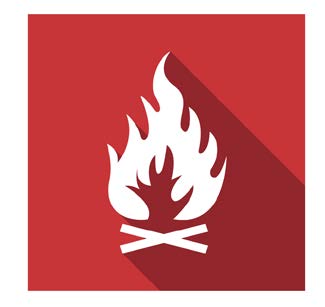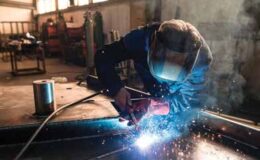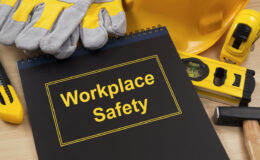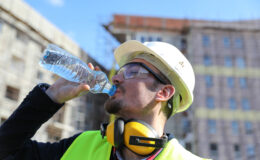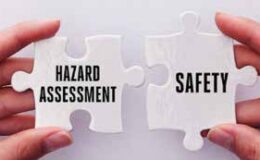By Travis Halsted, Loss Control Consultant
 As the winter months are upon us, so is the use of furnaces, personal heaters, propane heaters and a plethora of other heating devices. These heating devices can often cause safety concerns, especially those regarding
As the winter months are upon us, so is the use of furnaces, personal heaters, propane heaters and a plethora of other heating devices. These heating devices can often cause safety concerns, especially those regarding
potential fire factors. This concern brought about thoughts of other fire hazards that we see during loss control visits and how to possibly remedy those hazards. During our loss control visits, we attempt to identify potential and present exposures for that particular facility. As each facility is different and may complete different processes, the hazards found will vary. Possibly, one of the most effective ways to avoid fires, is to aim at strategic fire prevention.
How can fire prevention be strategic you ask? By recognizing the hazards, putting procedures in place, auditing those procedures and continuing education for new and existing employees, your workplace will strategically reduce the likelihood of a fire. Fire hazards can be found within office settings, maintenance areas, industrial production floors, paint booths, plating facilities and other types of environments. This often leads companies to question what they can do to properly prevent fires. The topics below are just some of the items that I often make recommendations about during the loss control visits. These particular topics could greatly assist in fire prevention.
 Housekeeping – Maintaining proper housekeeping is a large part of the proactive framework of fire prevention. By maintaining proper egress to exits and firefighting equipment, limiting the amount of flammable and combustible materials within areas of ignition factors, keeping stairways/storage rooms/hallways clear, and overall reducing the amount of clutter and rubbish, then a great deal of fire factors are already remedied.
Housekeeping – Maintaining proper housekeeping is a large part of the proactive framework of fire prevention. By maintaining proper egress to exits and firefighting equipment, limiting the amount of flammable and combustible materials within areas of ignition factors, keeping stairways/storage rooms/hallways clear, and overall reducing the amount of clutter and rubbish, then a great deal of fire factors are already remedied.- Soiled shop rags: Rags that are soiled with chemicals or oils should be placed in a metal container that is covered with a metal lid. The rags must be properly disposed of on a regular basis. These rags can often have no ignition item and spontaneously combust.
- Electrical hazards: Faulty wiring and malfunctioning electrical equipment can start many fires. Proper preventative maintenance should be completed and recorded. Furthermore, maintaining clear access to all electrical control panels is vital to allow egress to that panel in the event of a fire. Material or equipment stored in front of the panels would slow down the shutting down of power in an emergency situation.
- Store chemicals safely: Read and understand the SDS to determine possible fire hazards, if the chemical reacts with any other items, and safe extinguishing measures.
 Office Exposures: Within office settings, potential fire hazards come from overloading circuits with office equipment, placing extension cords under carpets, leaving nonessential equipment on after the workday, and allowing rubbish to gather in large quantities. As a great deal of personal heaters are found in office settings, it is essential that some tips regarding these heaters are followed. These personal heaters should have a thermostat that automatically shuts them down when the desired temperature is reached. Furthermore, they should have a tip over automatic shut-down feature and should not be placed within 3 feet of combustible materials (trash cans, paper boxes, desks). Finally, these heaters should NOT be placed under desks or other enclosed areas and should ALWAYS be monitored when in operation.
Office Exposures: Within office settings, potential fire hazards come from overloading circuits with office equipment, placing extension cords under carpets, leaving nonessential equipment on after the workday, and allowing rubbish to gather in large quantities. As a great deal of personal heaters are found in office settings, it is essential that some tips regarding these heaters are followed. These personal heaters should have a thermostat that automatically shuts them down when the desired temperature is reached. Furthermore, they should have a tip over automatic shut-down feature and should not be placed within 3 feet of combustible materials (trash cans, paper boxes, desks). Finally, these heaters should NOT be placed under desks or other enclosed areas and should ALWAYS be monitored when in operation. Flammable/Combustible Fluids: Many facilities use 55 gallon drums of flammable/combustible materials within their facilities. It is vital to know that it is not actually liquid that burns, but rather the vapors. As a great deal of vapors are released when the material is dispensed, it is paramount to ensure that if your facility has any of these drums that are equipped with a spout, valve or faucet, that they are auto shutoff. In the event that there is a flash, or employee injury, it is vital that the flow of material is instantly cut off. These valves are usually spring loaded and will shut off the flow of material if the user is no longer pressing the valve handle. In addition to the valve, these containers need to have a ground wire that has one end connected to the drum/container and the other end to something that is grounded, preferably direct to a ground rod. Finally, a ground wire should also be connected to the valve where the product is being dispensed and the other end should be connected to the container being filled.
Flammable/Combustible Fluids: Many facilities use 55 gallon drums of flammable/combustible materials within their facilities. It is vital to know that it is not actually liquid that burns, but rather the vapors. As a great deal of vapors are released when the material is dispensed, it is paramount to ensure that if your facility has any of these drums that are equipped with a spout, valve or faucet, that they are auto shutoff. In the event that there is a flash, or employee injury, it is vital that the flow of material is instantly cut off. These valves are usually spring loaded and will shut off the flow of material if the user is no longer pressing the valve handle. In addition to the valve, these containers need to have a ground wire that has one end connected to the drum/container and the other end to something that is grounded, preferably direct to a ground rod. Finally, a ground wire should also be connected to the valve where the product is being dispensed and the other end should be connected to the container being filled.
Just as in most cases, training is undoubtedly the biggest prevention tool that you have. In fire prevention training you should train the employees on the items mentioned above and any fire prevention plan that is in place. A possible fire prevention plan should include some of the following items;
 Emergency Contact Numbers. These numbers can include contact numbers for management, utility companies, emergency services and the individual(s) responsible for maintaining equipment to prevent or control sources of ignition or fires.
Emergency Contact Numbers. These numbers can include contact numbers for management, utility companies, emergency services and the individual(s) responsible for maintaining equipment to prevent or control sources of ignition or fires.- A list of all major fire hazards, proper handling and storage procedures of hazardous materials, potential ignition sources and their control, and the type of fire protection equipment necessary to control each major hazard.
- Procedures to control accumulations of flammable and combustible waste materials.
- Procedures for regular maintenance of safeguards installed on heat-producing equipment to prevent the accidental ignition of combustible materials.
As fire prevention is often seen as less of a priority as there are no apparent paybacks and the fire prevention plan is used rarely, it is vital to remember why it is actually completed. Fire prevention is completed to provide protection to the daily operations and overall productivity of the company. It is completed to protect the property that is paramount for the company to be able to satisfy the demands of their customers. Finally, and most importantly, fire prevention is completed to provide the employees with the safest workplace by being prepared for a catastrophic event.
If you need additional ideas about fire prevention or have questions regarding developing a fire prevention plan, please do not hesitate to contact your loss control consultant.

